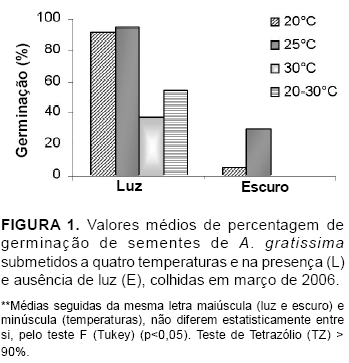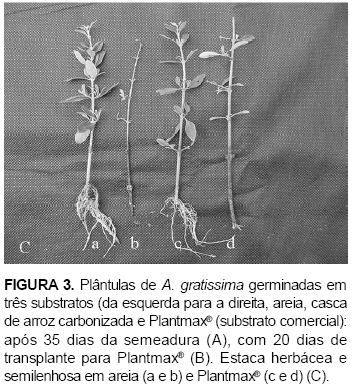Brazilian-lavender is a medicinally important plant since it produces terpenes. As regards ethnopharmacology, it is mainly efficient against bronchial, lung and bladder infections. The aim of this work was to study Aloysia gratissima propagation for seedling production. In sexual propagation, temperature influence in the presence and absence of light and three seed harvesting times (March, June, and September) were studied. Three different substrates (sand, carbonized rice husk, Plantmax®) were also evaluated for seed germination. In vegetative propagation, two cutting types (herbaceous and semihardwood) and two substrates (sand, Plantmax®) were tested. Seed germination was higher under constant temperatures of 20 and 25ºC, and March was the best seed harvest time for sexual propagation. The commercial substrate was the best for seedling growth, peaking 93.25% seedling emergency and 100% survival. For asexual propagation, herbaceous cuttings in the commercial substrate and sand presented 96% and 95% rooting, respectively.
Verbenaceae; substrate; germination; cutting







